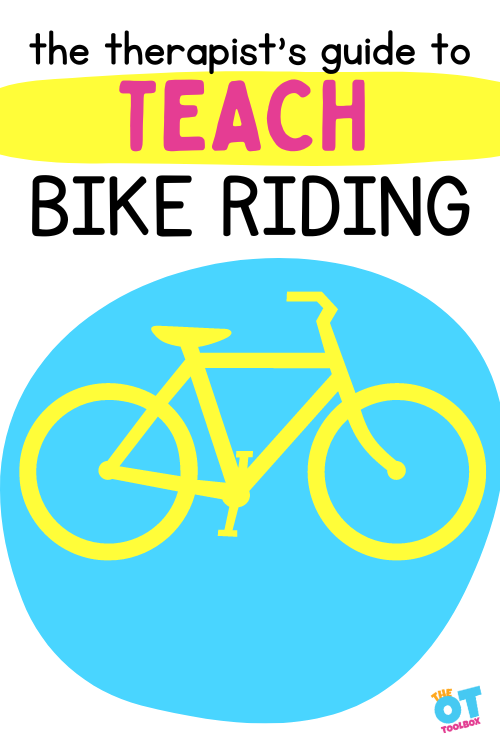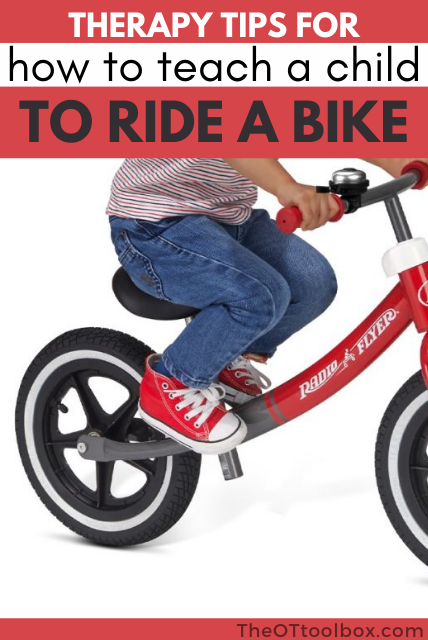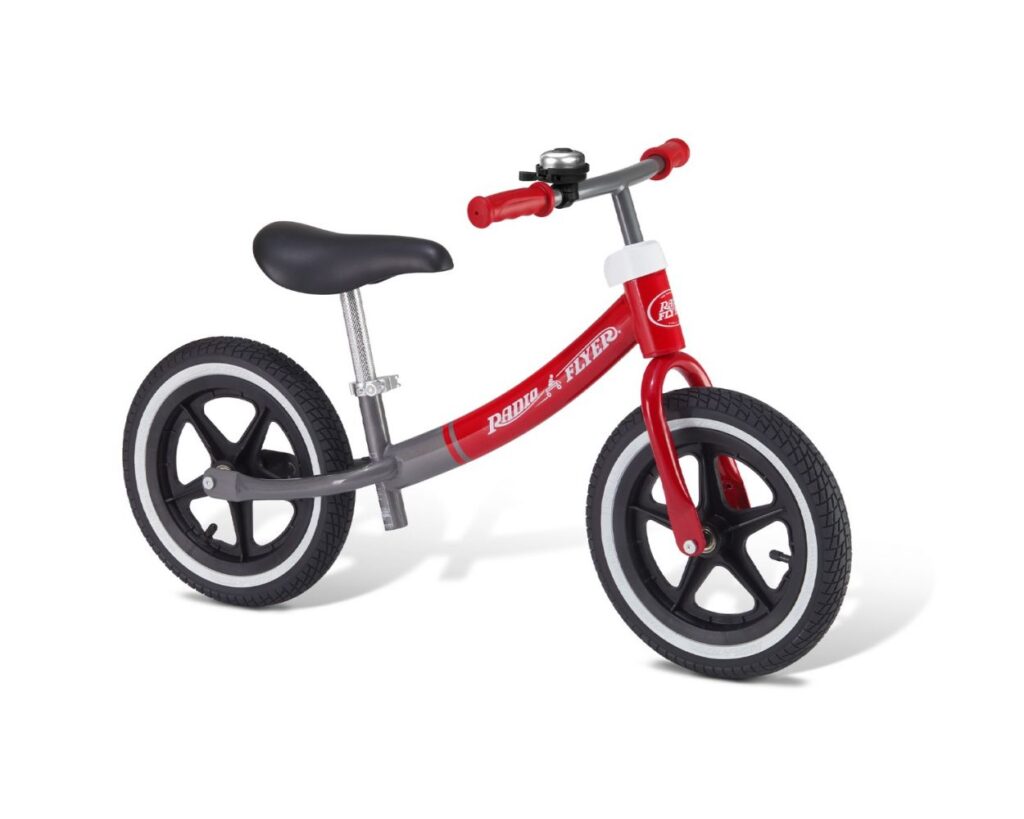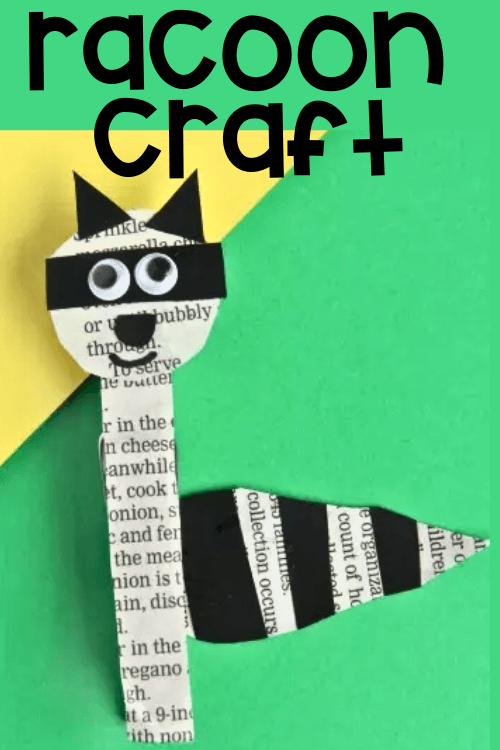One play-based skill that most parents struggle with is dealing with teaching their child how to ride a bike. In this blog post, we cover how to teach bike riding, based on the underlying skills that are needed for balancing and pedaling a bicycle. We’ll address how to ride a bike without training wheels, and how to support your child’s specific needs when it comes to learning to ride a bike. Summer occupational therapy activities include working on the skills kids WANT to get better at! So, if you’re starting with a balance bike, then you are in the right place, because we love to use balance bikes to teach bike riding skills! We’ll cover how to teach balance bike riding as well.
Let’s get started!

Teach Bike Riding based on underlying skills
One of the best tips for learning to ride a bike a therapy provider can suggest is to target the underlying skills that impact balance, sitting on a bike, pedaling, steering, and braking a bicycle. Considering the skills needed for riding a bicycle pertains to children with neurodiverse needs, typically developing children, and even adults learning to ride a bike!
Pediatric occupational therapists work with children to help them accomplish functional tasks, from play, to self-care, to learning, to day-to-day activities. Riding a bike is just one of those areas that an occupational therapist can work with children and families to facilitate function and ability.
When children struggle with riding a bike, there may be underlying issues happening that impact the successful transition to independent bike riding. Those areas might be as a result of an injury or diagnosis, or it might be a weakness in a specific area like strength, coordination, or balance.
This post was originally part of our giveaway series in the Therapy Toys and Tools Giveaway series. (Giveaway now closed.)

Skills needed for bike riding
When occupational therapy professionals work with children to achieve the functional task of riding a bicycle, they can help kids achieve independence with areas that are needed for bike riding:
- Core strength
- Motor planning
- Balance
- Sequencing
- Postural praxis
- Upper body/lower body disassociation
- Motivation
- Body awareness
- Visual convergence
- Visual scanning
- Coordination
All of these areas can be achievable by working on underlying areas through therapy.

How to Teach a Child to Ride a Bike
These are the general steps to follow when teaching a child to ride a bike.
Select the appropriate bike: Riding a bike requires visual skills, motor skills, and cognition. Determining the best bike to support these needs is pivotal. For the young child who is gaining more refined control of motor skills, or the individual requiring greater motor support, it may be best to start with a tricycle bike.
Others may benefit from a balance bike (see below) or a bike with greater back support. The great news is that there are many options out there to support specific needs.
Some of the adaptive equipment or modifications that can aid the child in maintaining balance while riding a bike include:
- Specialized seating
- Handlebar adaptations
- Foot support options like rear box, pedal toe cages, wider pedals, platform pedals, or pedal straps
- Bike height
- Back rest
- Three-wheeled bike options
- Trunk support
- Stabilizer wheels
- Thigh supports
- Safety training handle
One tip that is beneficial to all new bike riders is to ensure that the bike that fits them well. Sizing a bike to fit the rider means that the bike height should allow the rider to comfortably touch the ground with their feet when seated.
Teach a child how to balance on a bike
When working on a preferred task like learning to ride a bike, a therapy professional will look at several things that contribute to the ability to balance and sit on a bicycle.
These are the skills that are needed for balance and coordination to sit on a bicycle and maintain balance:
- Core strength/stability
- Bilateral coordination
- Visual gaze up (looking out in front of the bike, not down at the pedals)
- Separation of upper body/lower body (Upper body/lower body disassociation)
- Seated balance
- Muscle strength
- Visual processing skills
- Hand-eye coordination
- Range of motion
- Endurance
- Motor planning
Once the balance is in place, then you will start to see the ability to move the pedals and steer as an integrated process. This all happens through practice and experience in bike riding, but before one can move the bike, they need to have the basic ability to sit upright on the bicycle frame and place feet onto the pedals to start pushing.
One way to address the balance aspect is to use a balance bike which has no pedals and allows the child to focus on maintaining balance and steering.
Balance tip: When teaching balance on a bike for the first time, try finding a flat lawn. The grass offers more resistance which is greater feedback through the pedals than a relatively smoother surface of a parking lot. Plus, the grass is a better place to land compared to the asphalt of a street or parking lot.
To teach kids to have and maintain balance:
- Consider balance exercises off the bike: The physical therapist will design exercises and activities to target the child’s balance and stability. This may include activities such as sitting on a therapy ball, balancing on a wobble board, or performing dynamic movements while seated.
- Teach them to scoot: Encourage your child to straddle the bike with their feet on the ground. Demonstrate how to push off with their feet and glide, using their legs to maintain balance. This helps them get comfortable with the motion of the bike.
- Work on pedal motion: One of the main pieces of balance is getting those pedals moving. When the pedals are moving, the bike is balanced (including the upper body balance as well). To support pedal use, there are contributing factors: bilateral coordination, gross motor coordination, force modulation, holding the foot in place without pushing too hard, holding the foot on the pedal platform, and using pedal brakes.
- Verbal prompts- Use consistent prompts for pushing pedals: “push down” and “raise up”. Encourage the learner to always start with their stronger foot too, using their dominant foot to start the pedals and to push on the break.
- Physical prompts- Start by holding onto the handle bars as a physical prompt. Then move to holding onto the seat. A seat extender can help too.
- Braking- Getting the hang of steering helps with balance. Sudden stops can impact balance so working on smooth motor planning.
Therapy Tips for Bike riding
Use a bike without pedals to work on balance.
Address pre-bike riding skills by breaking down the skills that kids need for bike riding, including coordination of both legs, core strength, etc.
Work on core strength with activities like animal walks, donkey kicks, bicycle leg pumps, standing on one foot to build balance.
Use a balance bicycle to work on fears related to balance by allowing kids to glide feet along the sides of the bike.
Work on motor planning by stopping and starting the pedal-less bike and picking feet up/running feet along the bike, and stopping the balance bicycle.
Address core strength and endurance with yoga.
Address balance and upper body/lower body disassociation by pushing feet down and lifting feet up to practice gliding and balance.
Address vestibular issues by practice getting on and off the balance bicycle with both feet down on the floor and then just one foot down on the floor.
Work on vestibular input and balance, coordination by working on lean with a balance bicycle.
Build confidence in young bicycle users by instilling confidence in riding a bike without pedals.
Using a bike without pedals offers so many opportunities to work on all of the areas needed for bike riding, and core strengthening, motor planning, balance, and sequencing can help children become successful in helping them reach this goal.
Balance Bike for teaching bike riding skills
There are so many reasons why as an occupational therapist, I love the use of a balance bicycle to help children learn to ride a bike. I would love to share those reasons for using a bike without pedals in teaching bike riding. Here, you’ll also find bike riding tips and reasons that a balance bicycle helps children with balance and bike riding skills.
balance Bike for Kids
Balance bikes are nice to work on some of the skills that impact overall bike riding:
- Balance without the pedal aspect
- Navigating obstacles
- Steering
- Using a helmet
- Encouraging disassociation of two legs in pedal motion without the pedals- the balance bike requires legs to “run” alongside the bike. This is a great precursor to pedaling.
At this stage, teaching kids to use a balance kid for 2 year old children can involve pre-bike riding skills. These can involve things like breaking down the skills kids need and working on the areas listed above.
In all of these ways, bikes without pedals are so helpful for teaching bike riding, from 2 years old and older!

Radio Flyer Air Ride Balance Bike
Want to add a bike without pedals to your toolbox? Let’s get kids moving and building skills!
The Radio Flyer Air Ride Balance Bike is a great tool to add to your therapy toolbox or to use in your home to teach young kids to ride a bike! The Radio Flyer Air Ride Balance Bicycle is a pedal-less bike that allows kids to build balance and other bike riding skills.
Check out the comments below, for ideas on how readers would use the balance bicycle to teach a child to ride a bike!

Colleen Beck, OTR/L has been an occupational therapist since 2000, working in school-based, hand therapy, outpatient peds, EI, and SNF. Colleen created The OT Toolbox to inspire therapists, teachers, and parents with easy and fun tools to help children thrive. Read her story about going from an OT making $3/hour (after paying for kids’ childcare) to a full-time OT resource creator for millions of readers. Want to collaborate? Send an email to contact@theottoolbox.com.


